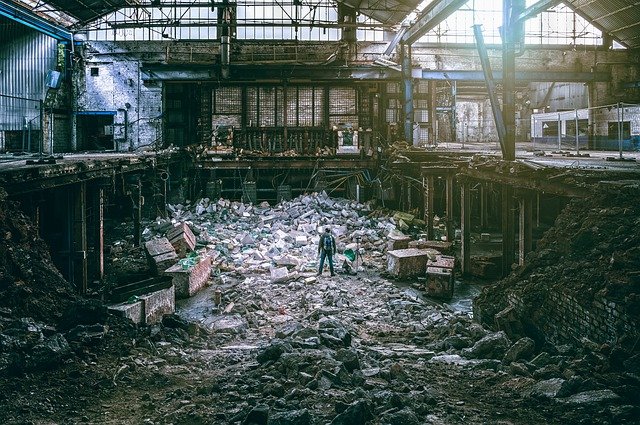The Singer Building was a high-rise building located in the U.S. state of New York. It was the headquarters of the Singer Manufacturing Company, situated at the northwest corner of Liberty Street and Broadway in lower Manhattan’s financial district. The building was designed in phases from the year 1897 to 1908 and was commissioned by Frederick Gilbert Bourne who was the leader of the Singer Company.
The building was designed by the architect Ernest Flagg. The original Singer Building was a structure made of red brick and stone with a mansard roof. However, in the year 1906, which was seven years after the original building had been made, work began on a new building that incorporated the original building making the Singer Building “the tallest building in the world” during that time. The new building was considered an engineering revolution of that time and the only structure taller in the world was the Eiffel Tower. In the new building, the designers incorporated a 612-foot shaft in the Beaux-Arts style with a massive mansard roof and lantern at its peak. The columns in the lobby of the new building rose high to meet the delicately plastered domes. The columns were made of marble with bronze trim and medallions monogrammed with the Singer name with a needle and thread.
The entire façade of the building was made of red brick, light-colored stone, and terracotta. Approximately, 733,000 square feet of terracotta were used in the façade and interior partition walls. Around 5 million bricks were used to construct the entire project, including one million bricks in the tower section. There were around 85,203 square feet of glass that were used in the entire building, about 10% of which was used in the interior and the rest was used in the façade. There were heavy ornamentations used in the building that was made of copper and bronze.
When the Singer Building was opened to the public in 1908, it was recorded to be the tallest skyscraper in the world. After all, these years later, the building still held the record of the world’s largest skyscraper to be peacefully demolished. The 47-story building had always been a landmark of downtown Manhattan due to its unique design and features. The architect, Ernest Flagg found the way that the sides of skyscrapers grew upward from the edge of their sites very unacceptable. He believed that buildings that are higher than 10 or 15 stories should be set back from the streets below. Hence the most unique feature of the Singer Building was the narrow 35-story tower protruding from the original structure’s lower floors. This unconventional design was one of the very factors that led to the Singer Building Demolition.
In 1961, the Singer Sewing Machine Corporation decided to move out of the building as it had become outdated. Then the Singer Building along with the City Investing Building which was the only other building in the block was sold to Webb & Knapp. Webb& Knapp bought both buildings in the hopes of relocating the New York Stock Exchange to the site. In the meantime, the New York City Landmarks Preservation Commission (LPC) said that the Singer Building had historical significance but he also said that it was virtually impossible for the LPC to save the building. To save the building, a buyer has to acquire the structure or the city has to acquire it. However, at that time, the city wasn’t wealthy enough to acquire a building as big as the Singer Building.
The Singer Building Demolition happened after United States Steel bought the building in 1964. USS decided to build a 54-story building in place of the Singer Building and the City Investing Building, which later came to be known as the One Liberty Plaza. The Singer Building Demolition happened in the year 1967 which made it the world’s largest building ever to be demolished. When people started to realize that the demolition was inevitable, many of them fought to save the lobby of the building as it was made with intricate details and it was symbolic for the people of downtown Manhattan. However, the entire building’s demolition was approved by the City regardless. The chandeliers from the lobby of the Singer Building are the only remains left of the structure which was later put in the East Building at Pratt Institute in Brooklyn.
Several magazines and reporters described this to be New York City’s greatest loss. The ALA Guide to New York City said, “What was lost in the demolition of the Singer Tower was not only a vital part of the city’s architectural past but a telling lesson in the humanistic urbanism of the tower-base skyscraper type.” The Singer Building Demolition is said to be one of the biggest failures of the preservation movement. Christopher Grey, who was a writer for the New York Times, showed efforts to save the building and described the lobby as “a forest of marble columns that were alternately rendered in the monogram of the Singer company, and quite inventively, as a huge needle, thread, and bobbin.” Alan Burnham, the executive director of the LPC even filed a request asking the USS to at least save the lobby from demolition.
The requests of these people had no effect whatsoever and the demolition of the Singer Building began in 1967. After a year, the huge domed tower was nowhere in sight among the buildings in downtown Manhattan. Although the city had created the LPC, the Singer Building was not recognized as a historical landmark that would have stopped the demolition of the building. At the time when it was torn down, it was the world’s tallest building to have ever been demolished until September 11, 2001. September 11, 2011, was the day when the World Trade Center located just one block over the Singer Building collapsed. Today, the Singer Building might not be the tallest skyscraper to have been demolished but it is still the tallest structure whose demolition was predicted.






